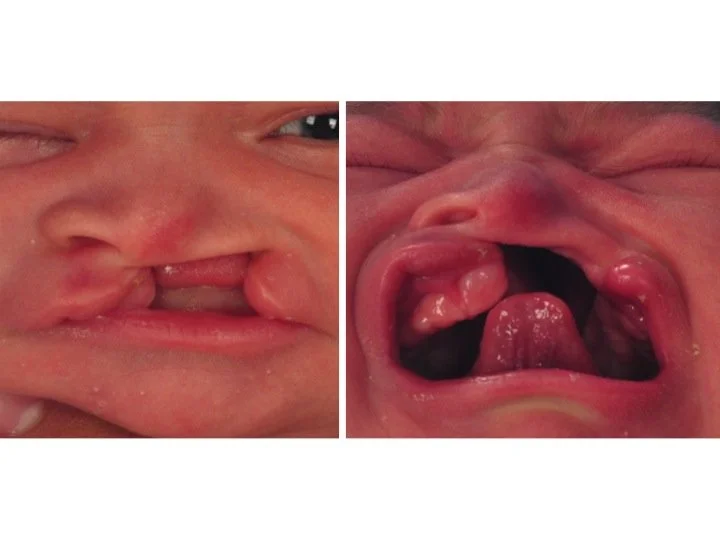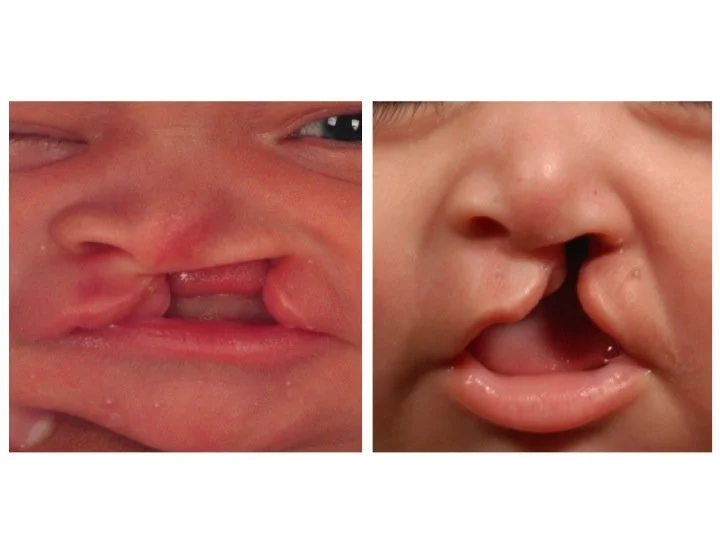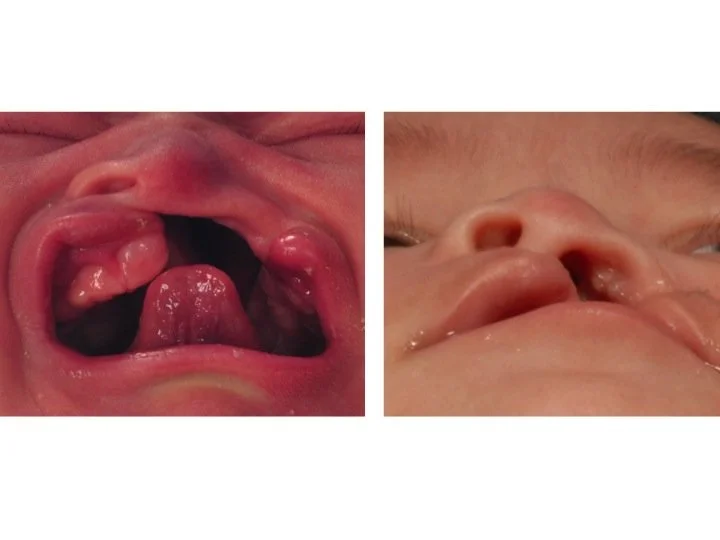Cleft Feeding
Babies born with cleft lip and palate or isolate cleft palate are unable to drink milk directly from their mother’s breast or an ordinary baby bottle. This difficulty with feeding is caused by the opening (cleft) in the roof of the mouth (palate). The cleft in the palate connects the mouth and the nose making them one large cavity. This prevents the baby from creating suction to form a correct seal around the breast or bottle nipple to pull the milk out for drinking. Therefore, the baby needs to use a specialized bottle that does not require suction to deliver milk and formula. These bottle/nipples include the pigeon nipple, the Haberman Feeder and the cleft palate nurser models.
Ideally, you know the diagnosis of cleft lip and palate for your child before he/she is born. In this case I would have you meet one of our feeding specialists at Children’s Health before the birth of your child. Our Speech Therapists are our feeding specialists and they will provide you with feeding supplies, demonstrate the use of the bottles and provide education materials that will make your early attempts to feed your baby easier. Babies with a cleft palate and no other health issues can swallow normally and will gain weight normally when the appropriate feeder is used. We routinely perform weight check in the first few weeks of life to ensure that our patients with clefts of the lip and/or palate are gaining weight appropriately.
If you did not know your baby’s cleft diagnosis prenatally or were unable to meet a feeding specialists before delivery of your baby, I recommend that you have your child evaluated by members of the CMC cleft team within 1 week of being discharged from his/her birth hospital. The speech therapist will examine the size and location of the cleft and will watch your baby feed with the nipple/bottle you bring to the appointment. Feeding your baby should last 30 minutes or less so your baby can gain weight easily. Based upon the efficiency of feeding, they may try several models of feeder to decide which is best for your child’s needs.
There are many benefits of breast feeding and I encourage mothers to feed their babies breast milk. As I stated above, the cleft palate prevents latching because babies with cleft palate can not create suction in the mouth. When attempting to breast feed a baby with a cleft palate it may appear that they are latching and feeding but they will not be able to draw out milk well and will use a lot of energy in the process. This can make early attempts to breast feed a source of frustration and worry for mothers of a baby with cleft palate. We advocate breast pumping and using the breast milk in the specialized feeder that the speech therapist provides you. This approach allows for the most efficient feeding of breast milk, still provides all of the benefits of breast milk for the baby and the gives your baby the best chance of gaining weight normally.
-
· Align and approximate the gums
· Reshape the deformed nostril on the cleft side
· Reposition the nasal tip on the cleft side
-
· NAM uses a custom made molding plate that we call a NAM appliance. The NAM appliance fits the gums like a denture. The appliance has some room at the ends of the gums. The gums grow into this space and toward one another. This narrows the width of the cleft.
· After about 4-6 weeks, the gums have grown close enough that the tension on the skin and cartilage of the nose is relieved. This allows the skin and nasal cartilage to be molded into a to better position using a nasal extension from the NAM appliance.
-
NAM can only provided by an orthodontist with specialized training in craniofacial orthodontics. I exclusively work with Dr. Yongjong Park at Children’s Health in Dallas. Infants with cleft lip and palate visit the cleft orthodontist within the first 2 weeks of life. At their initial visit, the orthodontist takes an impression of the gums that is used to make the NAM appliance. The appliance is given to the family about one week from the time of the impression.
The NAM appliance is held into position in the baby’s mouth by applying a small amount of denture adhesive and skin tape applied to the cheeks. The baby is growing 24 hours per day every day, therefore the baby wears the appliance almost 24 hours per day, including feeding. The appliance is only removed when it needs to be cleaned which is every 12 hours. We make sure that the family feels comfortable with the process before going home. All of the supplies needed are provided to the family with the delivery of the appliance.
After delivery of the NAM appliance, the orthodontist adjusts it every week at the beginning of treatment and this interval is then adjusted depending on treatment progress. During these adjustments space is created at the ends of the space for the gums in the appliance. The gums will then grow into this space over the next week. Each appointment takes about 30 mins. Typically, the gap in the gums (alveolar segments) will be approximated first. Once this is achieved the tension is taken off the nostril, allowing shaping of the nose (nasal cartilage). A nasal prong is added to the NAM appliance during the nasal shaping part of the treatment. We continue NAM until the desired corrections in the gums, lip and nose are achieved. The average duration of treatment is about 3 months but this may vary according to individual needs. Looking at the representative before and after NAM photos below, it is easy to appreciate how NAM impacts the quality of the result obtained from the cleft lip repair.
NAM is an effective technique that is applied by the infant’s parents daily. We find that parents derive a huge sense of satisfaction by playing an active role in helping improve their child’s result from cleft surgery through their role in the NAM process.





